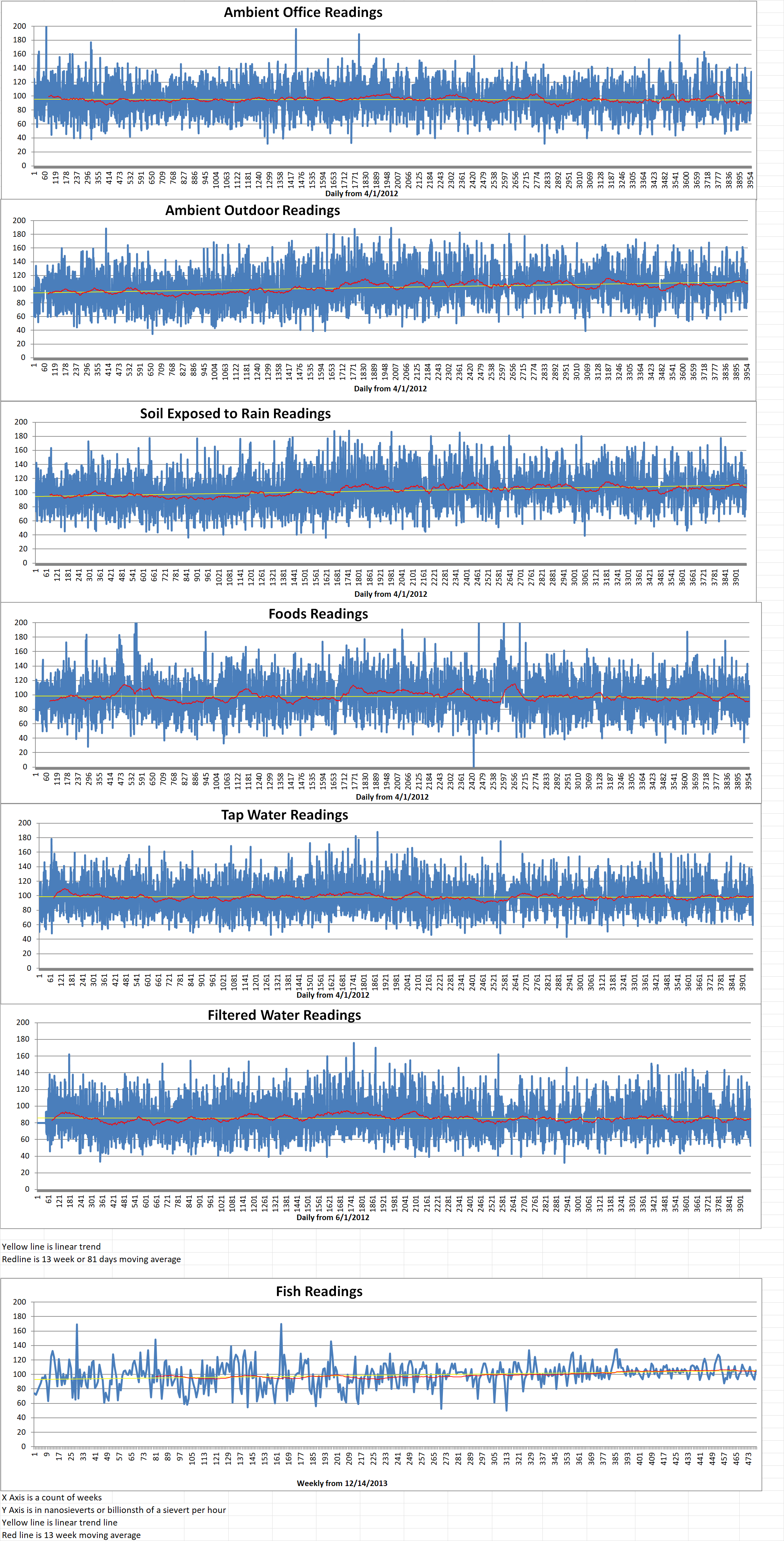Part 1 of 2 Parts
Last March, New Mexico (N.M.) lawmakers took their biggest step yet in an attempt to block plans for a nuclear waste storage facility near Carlsbad. The N.M. legislature passed Senate Bill 53. The bill seeks to block Holtec International efforts to build a facility in southeastern N.M. that would hold eight thousand six hundred metric tons of spent nuclear fuel from nuclear power plants across the U.S. N.M. has been challenging Holtec’s plans for years, both in court and before the Nuclear Regulatory Commission. However, N.M.’s best chance at stopping the project may come in the form of a new law, which went into effect when N.M. Governor Michelle Lujan Grisham signed it on March 17th.
Legal and nuclear experts anticipate that the new law will face legal challenges. Federal courts will likely determine if N.M. has the authority to prevent Holtec from constructing its Consolidated Interim Storage Facility on a one-thousand-acre site between Carlsbad and Hobbs.
Opponents of the project include the governor and state legislators, the N.M. congressional delegation, the All Pueblo Council of Governors, many local governments and an array of activists and citizens. Opponents say that transporting spent nuclear fuel through N.M. and storing it near one of the world’s most productive oil fields would jeopardize the economy, the environment, and health and safety.
Rose Gardner is a Eunice resident and member of the Alliance for Environmental Strategies. She said, “People are deserving of protection for our way of life and our health and well-being.”
The Governor sent a letter to the NRC after she signed the bill. She asked the agency “to immediately suspend any further consideration of the Holtec license application.” The Governor noted that the new law establishes two conditions that must be met before the state can issue permits, contract or licenses for a spent nuclear fuel storage facility. First, N.M. must consent to the facility. Second, the federal government must have a permanent spent nuclear fuel repository, so that an alternative storage site exists. Neither of those conditions have been met.
If no permanent nuclear waste repository exists, the Holtec site would not be “interim storage”. Instead, it would be forever storage. N.M. would become the dumping ground for all the spent nuclear fuel, say opponents.
If there is a court challenge, N.M. will need to prove that the new law is not focused on safety concerns. Nuclear safety falls under the purview of the federal government. This was established by the Atomic Energy Act (AEA). Under the AEA, the federal government retains the right to regulate safety issues for nuclear power plants and waste. The federal law preempts state statutes, which can be challenged in court if they conflict with federal authority. The fiscal impact report for the new law says, “Costly and time-consuming litigation could occur if this bill were challenged.”
Representative Matthew McQueen (D-Galisteo) is the co-sponsor of the bill. He directly addressed the preemption issue during committee hearing. He assured fellow lawmakers that the bill avoided any problems. He said, “Federal law preempts the state’s ability to regulate the safety or handling of nuclear waste. So we’re not doing that.”
Six lawyers and experts said that it was unclear whether NM’s law would be considered a preemption. Nuclear waste storage laws like N.M.’s are almost always challenged in court according to Geoffrey Fettus who is an attorney with the Natural Resources Defense Council. He said, “New Mexico took deep pains to sail the ship into the dock without hitting the sides of federal preemption.”
Please read Part 2 next
Blog
-

Radioactive Waste 903 – New Mexico Fights To Stop Holtec International From Constructing Spent Nuclear Fuel Storage – Part 1 of 2 Parts
-
Nuclear News Roundup May 03, 2023
INB signs contracts relating to fuel supplies at NT2E world-nuclear-news.org
IAEA assesses regulatory preparedness for Fukushima water release world-nuclear-news.org
Preparatory construction begins for Pallas research reactor world-nuclear-news.org
IAEA commends Sweden’s management of radioactive waste world-world-nuclear-news
-

Geiger Readings for May 03, 2023
Ambient office = 135 nanosieverts per hour
Ambient outside = 109 nanosieverts per hour
Soil exposed to rain water = 111 nanosieverts per hour
Blueberry from Central Market = 79 nanosieverts per hour
Tap water = 89 nanosieverts per hour
Filter water = 69 nanosieverts per hour
-

Nuclear Reactors 1216 – The challenge of keeping nuclear power construction on budget and on schedule – Part 2 of 2 Parts
Part 2 of 2 Parts (Please read Part 1 first)
The race is on for developers of small modular reactors (SMR) to find designs that the DoE could choose to build for up to ten units by 2025. Each reactor will have to generate between fifty and three hundred megawatts. The smaller, simpler project scale and standardization process management could result in the creation of a “playbook” for project construction. The DoE says “First-of-a-kind reactors may be expensive, but repeat deployments are expected to drive substantial cost reductions.”
GE Hitachi Nuclear Energy, the Tennessee Valley Authority, Ontario Power Generation and Poland-based clean energy technology firm Synthos Green Energy have all signed a technical collaboration agreement to support global development of GE Hitachi’s BWRX-300 SMR.
GE Hitachi has also awarded an engineering contract to BWX Technologies for the SMR reactor vessel. The vessel contains the reactor’s core and associated internals. It is the biggest component in the reactor. The project includes engineering analysis, design support, manufacturing, and procurement preparations. John MacQuarrie is president of BWXT Commercial Operations. He recently said that the company would be “one of the first to execute an SMR design contract for a North American deployment.”
Site preparation is being undertaken for a BWRX-300 reactor to be constructed at Ontario Power’s Darlington nuclear power site in Clarington, Ontario. The TVA is also preparing a construction permit application for the reactor at the Clinch River site near Oak Ridge, Tennessee. It is investigating other possible SMR sites in its service area. Synthos Green Energy has submitted an application to Polish nuclear regulator to assess the design for the BWRX-300 reactor.
Dow and X-energy have also agreed to demonstrate a four-unit Xe-100 advanced nuclear power plant that they claim would be the first at grid-scale for an industrial site. It will be located at a Dow plant on the Gulf of Mexico, the company said in March. Dow would become a sub-awardee under X-energy’s DoE-awarded Advanced Reactor Demonstration Program grant. This would represent a fifty/fifty cost share award of one-billion-dollars-plus to demonstrate the reactor.
This project is expected to provide low-carbon power and steam to the Dow plant by 2030. A construction permit application will be submitted to the Nuclear Regulatory Commission (NRC) with site selection expected before the end of 2023. The companies have also agreed to license and share technology as well as lessons learned from its development.
The NRC also said in March that it had started its technical review of NuScale Power’s second standards SMR design. This new version has changes that improve it economics and expedite commercialization, according to John Hopkins, the CEO of NuScale. The company’s VOYGR SMR is a pressurized water reactor that can generate 77 megawatts of power and be scaled to satisfy customer needs.
Even smaller micro-reactors are also gaining momentum. A new initiative known as Nuclear in District Energy Applications is being developed by the Electric Power Research Institute and a group of universities, energy developers and engineers that include Burns & McDonnell and Sargent and Lundy. This could result in nuclear energy being available as an option for the district energy market by 2026. There is also serious market potential for using small or micro nuclear reactors to charge heavy duty electric vehicles according to the Idaho National Laboratory.
Westinghouse Electric Company recently said that it would file for joint design approval for its five-megawatt eVinci micro reactor for deployment in the U.S. and Canada. The eVinci is a transportable unit that can deliver combined heat and power. It is fully factory built, fueled, and assembled. The eVinci is designed to operate for eight years or more without refueling, the company added. -
Nuclear News Roundup May 02, 2023
Engineers Reduce Risk of Dam Bursting Near Russian-Held Ukraine Nuclear Plant usnews.com
Doosan starts forging components for NuScale SMR world-nuclear-news.org
Seoul says Japan could be included in US-ROK nuclear planning, then backtracks | NK News nknews.org
Major module put in place at Sanmen 4 world-nuclear-news.org
-

Geiger Readings for May 02, 2023
Ambient office = 117 nanosieverts per hour
Ambient outside = 123 nanosieverts per hour
Soil exposed to rain water = 126 nanosieverts per hour
Avocado from Central Market = 113 nanosieverts per hour
Tap water = 60 nanosieverts per hour
Filter water = 52 nanosieverts per hour
-

Nuclear Reactors 1215 – The challenge of keeping nuclear power construction on budget and on schedule – Part 1 of 2 Parts
Part 1 of 2 Parts
One of the biggest challenges in the nuclear power industry is keeping nuclear power construction on budget and on schedule. This problem must be resolved if advanced nuclear reactors are to play a major role in the energy transition away from fossil fuels. The National Academy of Science, Engineering and Medicine (NASEM) just issued a new report on this issue.
Richard A. Meserve is a former chair of the U.S. Nuclear Regulatory Commission who led the research team which produced the report. He said that many technical, regulatory, economic, and societal hurdles must be dealt with in order “to reach commercial and globally competitive viability”. Development, testing and widespread deployment of these reactors could take several decades. The U.S. should address these problems now.”
The new NASEM report says that advanced nuclear technologies will probably not contribute in a significant way until the 2030s at the earliest. However, they can compete with other energy technologies in the long run. Innovative, advanced reactors may supply on-demand power generation to complement more variable clean energy sources such as solar and wind power. They could also help decarbonize industrial sectors including hydrogen, steel and cement production.
One major problem is that U.S. utilities do not have adequate technical and engineering staff to manage a nuclear construction project. The U.S. Department of Energy (DoE) says that three hundred and seventy-five thousand skilled workers are required to reach the goal of two hundred gigawatts of new reactors to be deployed by 2030.
The authors of the NASEM report mention the need for the U.S. to form a “whole of government partnership” to identify gaps in critical skills required to support rapid deployment of advanced reactors and fund training to close them. Public and private developers must also to “take full advantage of existing efforts at commercial nuclear facilities and national labs that already have well-established training and workforce development infrastructure in place.”
For most of the history of nuclear power production in the U.S. and Europe, nuclear projects have not been constructed on budget and/or on schedule.
The report claims that “While it is vital to demonstrate that advanced reactors are viable from a technical perspective, it is perhaps even more vital to ensure that the overall plant, including the onsite civil work, can be built within cost and schedule constraints.” The report recommends that the DoE increase support for technologies that could streamline and reduce costs and expand R&D for nuclear construction.
Some advanced reactor vendors are investigating modular construction to improve schedules and reduce risks. However, the challenge of cost-effective onsite civil works remains, according to the report. It also recommends that nuclear owner-operators create a consortium or joint venture to more completely develop the skilled engineering staff to boost project construction.
Advanced reactor developers should also consider equity partnership with nuclear sector experienced engineering, procurement and construction (EPC) contractors for site-specific project planning, design and execution.
The prospect of using nuclear energy for purposes beyond electricity generation must also be addressed. In addition, there must be strong assurances of safety and security to gain critical buy-in from communities, according to the report.
Please read Part 2 next -
Nuclear News Roundup May 01, 2023
Czechs look to dump Russian nuclear fuel Aljazeera.com
The UK and Germany have very different ideas about the future of nuclear energy cnbc.com
Coalition applies for US hydrogen hub funding world-nuclear-news.org
Russian forces evacuating town near occupied nuclear plant, Kyiv says reuters.com
-

Geiger Readings for May 01, 2023
Ambient office = 119 nanosieverts per hour
Ambient outside = 99 nanosieverts per hour
Soil exposed to rain water = 100 nanosieverts per hour
Tomato from Central Market = 70 nanosieverts per hour
Tap water = 115 nanosieverts per hour
Filter water = 97 nanosieverts per hour
-
Nuclear News Roundup Apr 30, 2023
Armenia and Russia discuss Armenian 2 operating extension, and new nuclear world-nuclear-news.org
Peabody to receive more energy from Seabrook nuclear plant salemnews.com
NRC to Investigate Ground Settlement Issues at Davis-Besse Nuclear Plant clevescene.com
Netanyahu: A nuclear Iran could blackmail any US city they want jpost.com
